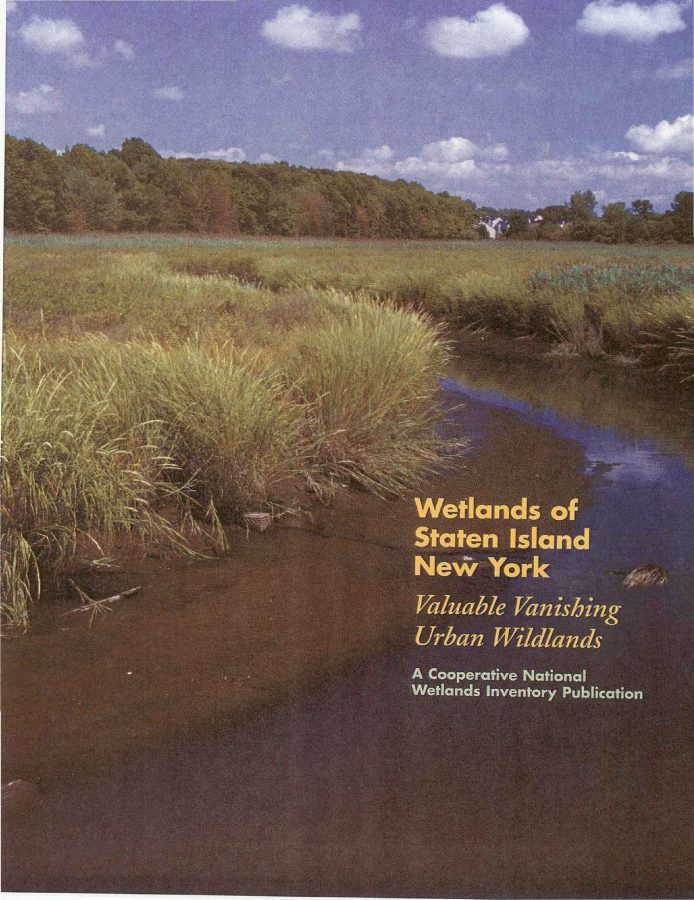The Often Overlooked Importance of Wetlands
Major companies are threatening the health of the Staten Island wetlands, bringing up environmental protection concerns everywhere.
Wetlands in Staten Island play a vital part in flood control, and are important to the community. They are under threat by BJ’s Wholesale Club, which wants to build an establishment on top of them. The issue has divided residents: on one hand, another big business such as BJ’s could help the economy, but wetlands are also a crucial part of their ecosystem.
Environmental protection has become an increasingly pressing issue, especially under President Biden. The issue of supporting capitalism at the expense of the environment stretches far beyond Staten Island, and can even be seen right here in the Pioneer Valley.
Wetlands, for most of history, have been discarded as a problem. Hard to build on and taking up space, they have been over ooked for years. But wetlands in America serve as a habitat for fish and other wildlife, and can even save lives. For example, during the deadly natural disaster of Hurricane Sandy in November of 2012, the wetlands on Staten island absorbed a lot of the flood water, saving the surrounding communities from even worse damage. In fact, 23 people died in Hurricane Sandy on Staten Island, but none of them in Granville on the North Shore where the wetlands are located.
Tom Lautzenheiser, an expert on wetlands who works at the Massachusetts Audubon Society in Easthampton, explained the importance of wetlands, and how detrimental their disappearance from ecosystems could be.
“Wetlands sort of act as a liver, and process everything that passes through them,” Lautzenheiser said. “They provide flood storage compacity. They also filter the water that passes through them because they are filled with organic material which pollutants stick to, and sort of trap them there and stop them from making their way further into the landscape.”
If wetlands were to start disappear, he said that the effects could be disastruous.
“We would have water quality issues, we would have flooding issues, and our drinking water supply would be compromised,” he said. “We would also have less ground water re-charge” (ground water re-charge is what happens when water seeps into the ground to replenish underground aquafers).”
Even though Lautzenheiser broadly touched on the impacts, his views can be easily applied to both issues in Staten Island and locally.
Many states and counties have tried to inhibit the amount of change to ecosystems with the Massachusetts Wetlands Protection Act. According to Mass.gov, the “Wetlands Protection Act (Massachusetts General Laws (MGL) Chapter 131, Section 40) protects wetlands and the public interests they serve, including flood control, prevention of pollution and storm damage, and protection of public and private water supplies, groundwater supply, fisheries, land containing shellfish, and wildlife habitat.”
This act is backed by a commission made up of a volunteer board appointed by a city council or official. Their job is to ensure “that proposed activities will not alter resource areas and the public interests they provide by reviewing projects on a case-by-case basis according to regulations.”
New York too, has a wetlands protection act. According to the New York City government website, “To be protected under the Freshwater Wetlands Act, a wetland must be 12.4 acres (5 hectares or larger). Wetlands smaller than this may be protected if they are considered of unusual local importance. Around every wetland is an ‘adjacent area’ of 100 feet that is also regulated to provide protection for the wetland.”
However, this somehow has not stopped the building of a BJ’s in Staten Island.
An article by The New York Times explains why this could be. Aside from the fact that “the project will create at least 200 local jobs” (according to BJ’s), they also claim that they will protect 11 acres of the wetlands and include rain gardens and holding tanks to curb flooding.”
However, nothing could be more effective in protecting the people of Staten Island or its ecosystem then leaving the natural habit as it is.













